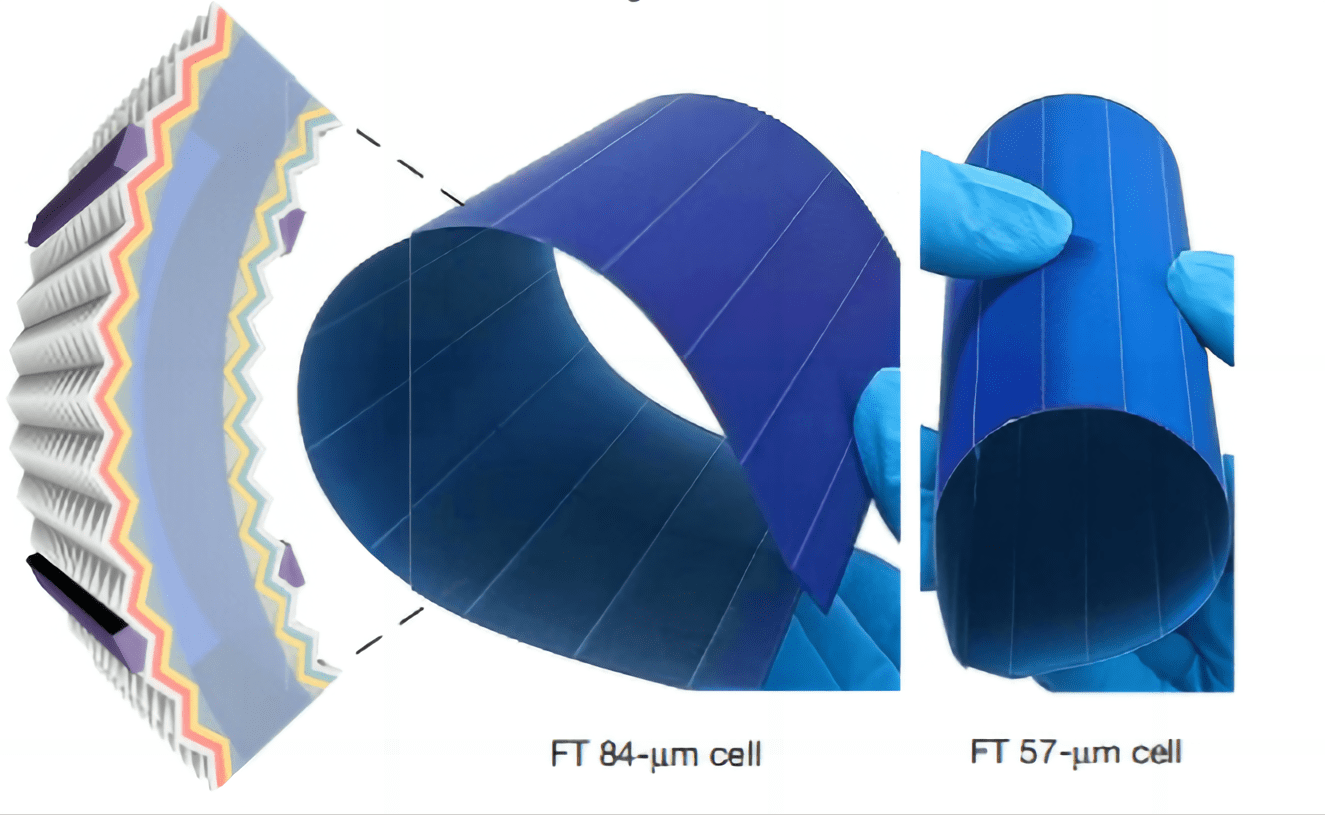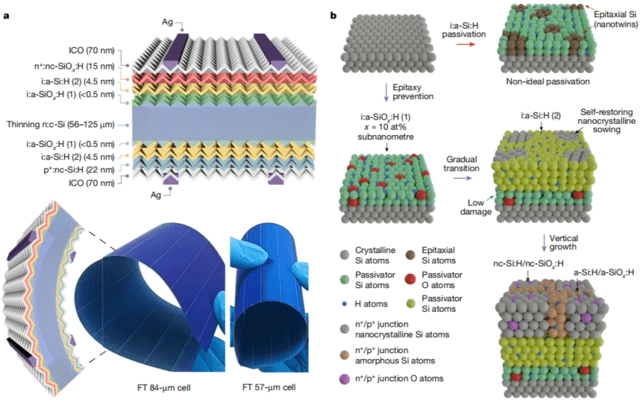LONGi, in collaboration with Jiangsu University of Science and Technology and Curtin University in Australia, has unveiled silicon heterojunction (HJT) solar cells that are thinner, more flexible, and more efficient. Their recent research, titled “Flexible silicon solar cells with high power-to-weight ratios” has been published in Nature.

Silicon solar cells are known for their maturity and cost-effectiveness in electricity generation. However, their use in scenarios requiring flexibility or strict weight limits, like floating solar panels or aerospace applications, has been limited.
The team focused on reducing the thickness of silicon wafers, integrating the advantages of thin-film solar cells into traditional silicon cells. The company noted that, historically, thin silicon solar cells (ranging from 55µm to 130µm) maintained power conversion efficiency (PCE) between 23.27% to 24.70%. Achieving a breakthrough over 26% has been a challenging task.

Test results show that among five products with thicknesses from 57µm to 125µm, all achieved conversion efficiencies above 26%, with the highest at 26.81%.
Notably, the 57µm thick solar cell stands out with a power-to-weight ratio of 1.9 watts per gram and a curvature radius of 19 millimeters, surpassing existing products by 2-3 times, certified by the Institute for Solar Energy Research in Hamelin (ISFH).
This breakthrough suggests that silicon solar cells could become a category of thin-film cells with notable flexibility. They can undergo various deformations, making them versatile for applications, said LONGi.
The breakthrough provides a practical foundation for the commercialization of flexible, lightweight, and highly efficient solar cells. The potential to bend or roll up crystalline silicon solar cells for travel is now within reach, marking a significant step forward in solar technology, as indicated by the study.


